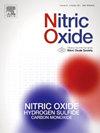Appraising diverse metrics of nitric oxide in salt stress tolerance of high yielding wheat genotypes
IF 3.2
2区 生物学
Q2 BIOCHEMISTRY & MOLECULAR BIOLOGY
引用次数: 0
Abstract
Staple crop vulnerability has been escalating with significant approach due to climatic variations leading to persistent salt accumulation as inimical environmental stressors, and thus endangering food security. To address this global concern, there is a need to elucidate the growth, physiological and yield responses, entailing plant salt tolerance modifications. Recent years have been advocated with studies focusing on the integration of nitric oxide (NO), however there is a need of critical decipherment on NO synthesis is regulated under salt stress conditions. With this focus, the present investigation has assessed the salt-mediated differential impacts on the plant growth, root architecture, photosynthetic pigment, carbon metabolites (carbohydrate and starch), and stomatal frequency, leading to restrained plant metabolisms in the 49 wheat genotypes. Further, the accumulation of secondary metabolites (flavonoids and phenols) was found concomitant with the improved NO biosynthesis in salt-stressed tolerant wheat genotype. To validate the involvement of endogenous NO as salt stress tolerance criterion, use of NO scavenger (cPTIO) suggests the involvement of NO in enhancing salt tolerance and stress defense metabolites mainly lignin biosynthesis, and cellulose to attain plant stress tolerance. These underlying interactions could pave the way to convey wheat tolerance for the future breeding programs.

高产小麦基因型耐盐胁迫中一氧化氮不同指标的评价。
由于气候的变化,主粮作物的脆弱性不断增加,导致盐分持续积累,成为不利的环境压力因素,从而危及粮食安全。为解决这一全球关注的问题,有必要阐明植物耐盐性改变所带来的生长、生理和产量反应。近年来的研究主要集中在一氧化氮(NO)的整合上,但需要对盐胁迫条件下一氧化氮合成的调控进行关键性的解读。有鉴于此,本研究评估了盐胁迫对 49 个小麦基因型的植物生长、根系结构、光合色素、碳代谢物(碳水化合物和淀粉)以及气孔频率的不同影响,从而导致植物代谢受限。此外,在耐盐胁迫的小麦基因型中,次生代谢物(类黄酮和酚类)的积累与 NO 生物合成的改善同时进行。为了验证内源 NO 参与盐胁迫耐受性的标准,使用 NO 清除剂(cPTIO)表明 NO 参与提高耐盐性和胁迫防御代谢物,主要是木质素的生物合成和纤维素,以实现植物的胁迫耐受性。这些潜在的相互作用可为今后的育种计划铺平道路,提高小麦的耐受性。
本文章由计算机程序翻译,如有差异,请以英文原文为准。
求助全文
约1分钟内获得全文
求助全文
来源期刊

Nitric oxide : biology and chemistry
生物-生化与分子生物学
CiteScore
7.50
自引率
7.70%
发文量
74
审稿时长
52 days
期刊介绍:
Nitric Oxide includes original research, methodology papers and reviews relating to nitric oxide and other gasotransmitters such as hydrogen sulfide and carbon monoxide. Special emphasis is placed on the biological chemistry, physiology, pharmacology, enzymology and pathological significance of these molecules in human health and disease. The journal also accepts manuscripts relating to plant and microbial studies involving these molecules.
 求助内容:
求助内容: 应助结果提醒方式:
应助结果提醒方式:


